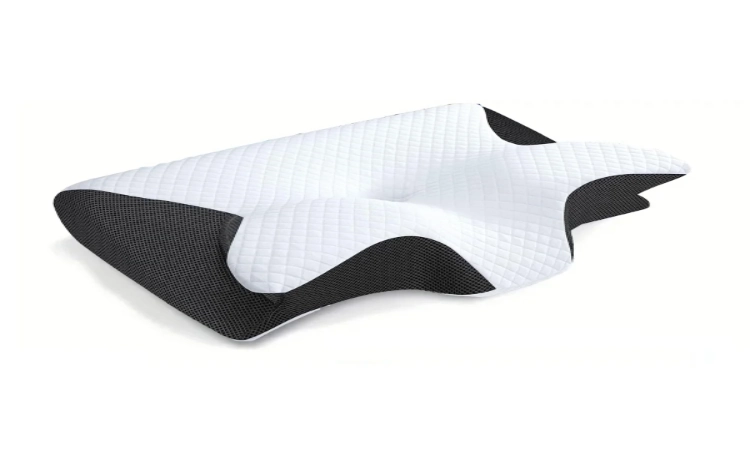What Is a Memory Foam Orthopedic Pillow?
A memory foam orthopedic pillow is engineered to provide enhanced support through its viscoelastic foam composition. Unlike conventional pillows, it adapts to the contours of the head and neck, promoting proper spinal alignment. This design aims to alleviate pressure points and reduce musculoskeletal discomfort. Understanding its material properties and structural advantages is essential to evaluating its effectiveness compared to traditional options. Further examination reveals how these features contribute to improved sleep quality.
The Composition and Design of Memory Foam Orthopedic Pillows
The composition of memory foam orthopedic pillows primarily involves viscoelastic polyurethane foam, characterized by its slow responsiveness to pressure and heat sensitivity. This material allows the orthopedic pillow to conform closely to anatomical contours, providing targeted cushioning. The foam’s density and firmness vary to accommodate different support needs, enhancing comfort and durability. The design typically incorporates contoured shapes that promote proper head and neck positioning without excessive elevation. Additionally, breathable covers often complement the foam core to regulate temperature and hygiene. Overall, the composition and design focus on delivering consistent support and pressure distribution essential for orthopedic applications. Derila Ergo liefert orthopädische neck Unterstützung und Druck Erleichterung mit memory-Schaum Bequemlichkeit. Discover Derila Ergo zu erfahren Sie mehr und nutzen.
How Memory Foam Supports Spinal Alignment
Memory foam orthopedic pillows facilitate spinal alignment by adapting to the natural curves of the cervical and thoracic regions. The viscoelastic properties of memory foam enable it to contour precisely to the head, neck, and shoulders, providing uniform support that maintains proper vertebral positioning. This customized support minimizes pressure points and reduces spinal deviation during rest. Memory foam’s ability to respond to body heat and weight ensures dynamic adjustment, sustaining ideal alignment throughout sleep cycles. Consequently, these pillows help maintain the anatomical integrity of the spine, potentially reducing strain on muscles and ligaments associated with misalignment.
Benefits of Using an Orthopedic Pillow
Multiple benefits arise from the consistent use of orthopedic pillows, particularly in enhancing sleep quality and musculoskeletal health. Orthopedic pillows provide targeted support that maintains proper spinal alignment, reducing strain on the neck and shoulders. This support mitigates common issues such as stiffness, pain, and muscle tension. Additionally, these pillows can improve breathing by promoting optimal head and neck positioning, potentially reducing snoring. Orthopedic pillows also contribute to improved circulation and pressure relief during sleep. Their ergonomic design facilitates restorative rest, which is essential for physical recovery and overall well-being. Consequently, orthopedic pillows serve as an effective aid in sleep-related health management.
Comparing Memory Foam Pillows to Traditional Pillows
Orthopedic pillows constructed from viscoelastic foam exhibit distinct characteristics when compared to traditional pillows made from materials such as cotton, down, or polyester. Memory foam pillows provide superior contouring by responding to body heat and pressure, promoting spinal alignment and reducing pressure points. Traditional pillows often lack this adaptive support, potentially leading to misalignment and discomfort. Additionally, memory foam demonstrates greater durability and resilience, maintaining shape longer than conventional fillers prone to flattening. However, memory foam may retain heat and possess a distinct odor initially, factors less common in traditional pillows. These differences influence user preference and orthopedic efficacy.
Conclusion
Memory foam orthopedic pillows, composed of viscoelastic polyurethane foam, provide targeted support by conforming to the head, neck, and shoulders. Their contoured design promotes proper spinal alignment, contributing to reduced discomfort and enhanced sleep quality. Compared to traditional pillows, they offer superior pressure relief and adaptive comfort through heat-sensitive properties. Overall, these pillows represent a clinically effective solution for individuals seeking improved musculoskeletal support and restorative rest.

